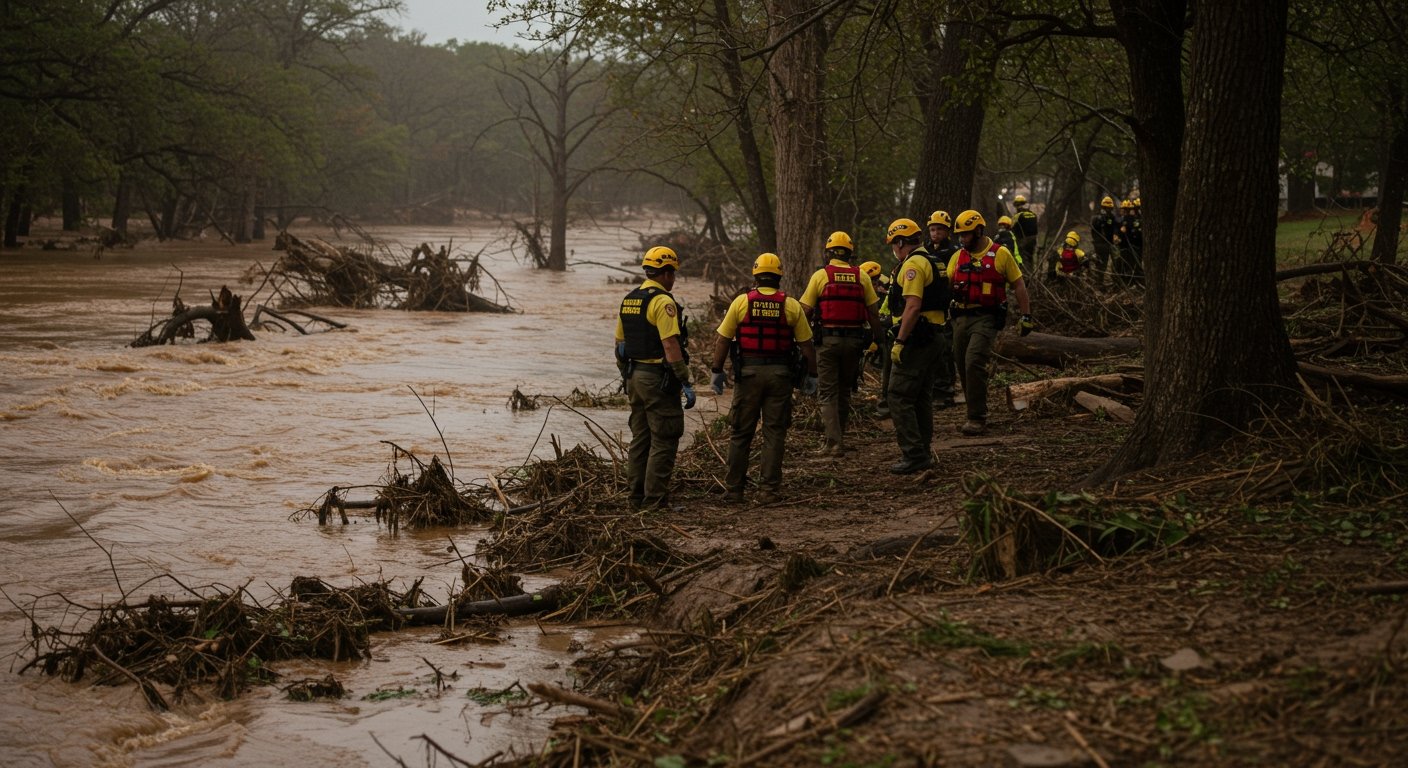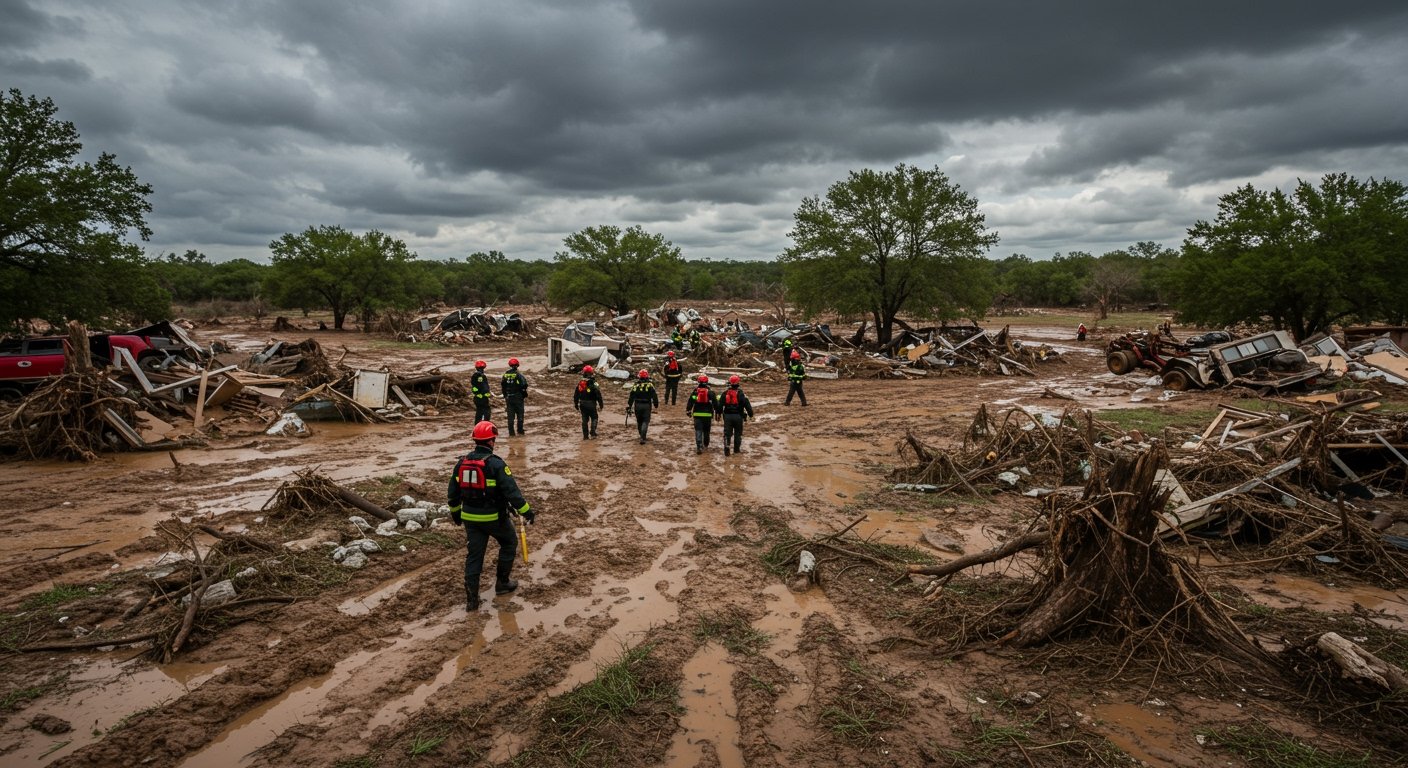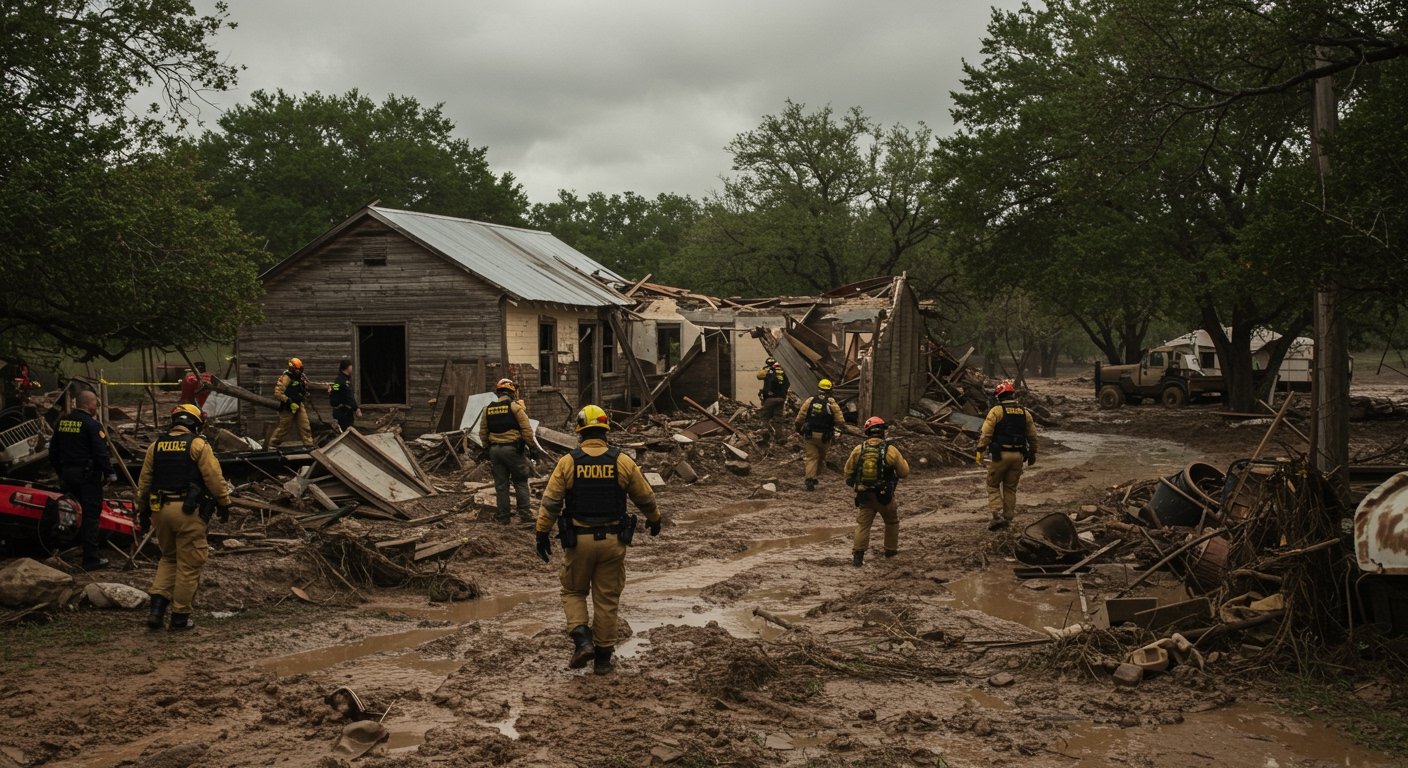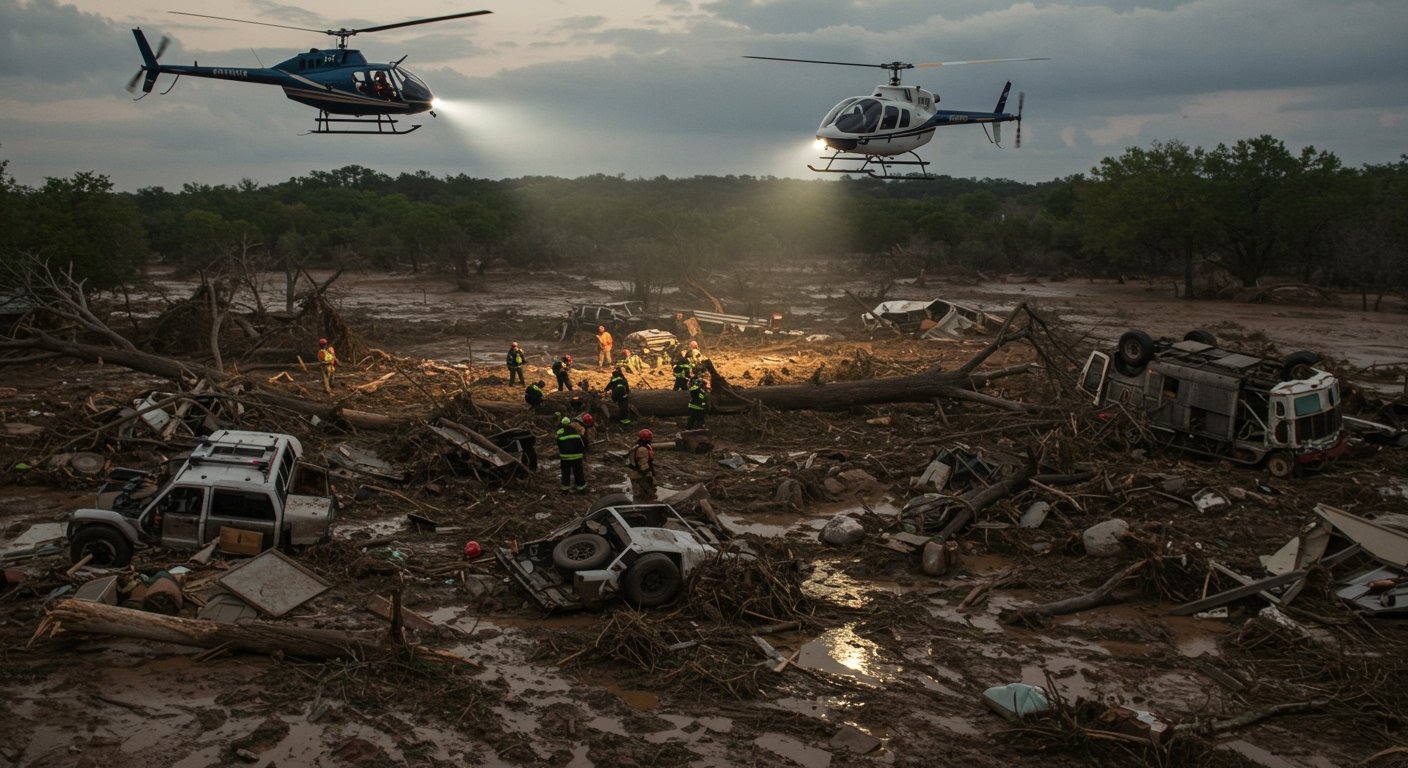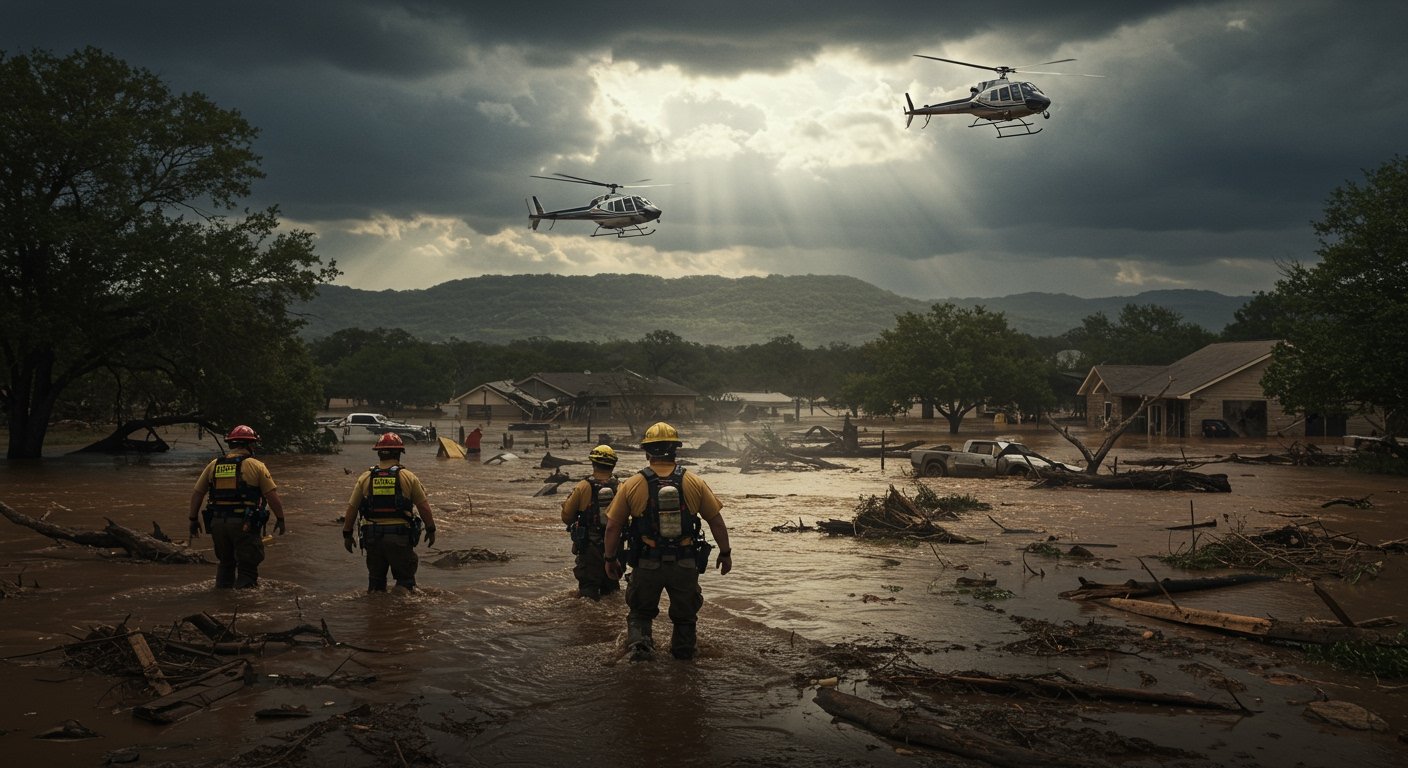CENTRAL TEXAS – A tragic flash flood in Central Texas over the Fourth of July holiday has claimed at least 78 lives, with the death toll now nearing 80 as rescue operations continue along the Guadalupe River. Search teams are desperately looking for missing children and other individuals caught in the sudden, violent surge of water.
The Catastrophic Event Unfolds
The sheer speed and intensity of the flood were devastating. Authorities and witnesses reported that portions of the Guadalupe River rose an astonishing 26 feet in less than an hour, giving residents and visitors little to no time to escape the rapidly advancing deluge. The suddenness of the event contributed significantly to the high number of casualties and missing persons.
The official death toll stands at least at 78, but rescuers believe it is nearing 80 as the full scope of the disaster becomes clear. Among those still unaccounted for are at least 11 campers, according to statements from a sheriff involved in the search efforts. The search for missing children remains a particularly poignant and urgent task for the rescue crews navigating the difficult and debris-filled terrain along the riverbanks.
Climate Connection and Growing Vulnerability
For climate scientists and weather experts, the Central Texas flood serves as a stark illustration of the nation’s increasing vulnerability to extreme weather events. Experts interviewed in the wake of the disaster are drawing a direct link between rising global temperatures and worsening flood risk. They point to this particular event as an example of an extreme, localized downpour, a type of weather phenomenon they say is becoming more common due to global warming.
This flood, according to these experts, highlights the broader trend of climate disaster posing a growing threat to communities across the country. The mechanisms linking warmer temperatures to more intense rainfall events typically involve the atmosphere holding more moisture, which can then be released in sudden, heavy bursts like the one experienced along the Guadalupe River.
Funding Cuts and Future Preparedness Concerns
Amidst the tragedy and the scientific assessment of the climate link, critics have raised serious concerns regarding the federal government’s approach to climate science and weather preparedness. These critics fear grim consequences stemming from actions taken under the Trump administration, specifically referencing cuts to programs and staffing at critical agencies like the National Oceanic and Atmospheric Administration (NOAA) and the National Weather Service.
According to these critics, the cutbacks have resulted in reduced funding for vital weather forecasting operations. Furthermore, concerns have been voiced about the shutting down of climate websites and the laying off of scientists – actions that, critics argue, weaken the nation’s ability to monitor climate trends, forecast severe weather accurately, and effectively respond to future disasters. The fear is that undermining these foundational capabilities leaves the country less prepared for the very types of events that climate scientists predict will become more frequent and intense.
Broader Implications for Disaster Preparedness
The deadly Fourth of July flood in Central Texas underscores the complex interplay between environmental change, extreme weather phenomena, and governmental capacity for forecasting and response. As experts warn of increasing risks linked to rising global temperatures, the resources and staffing dedicated to monitoring weather patterns and responding to emergencies become ever more critical. Critics argue that weakening these systems at a time of escalating climate risk could have severe and avoidable consequences for public safety and national security. The tragedy along the Guadalupe River serves as a powerful reminder of the human cost when these forces converge.


